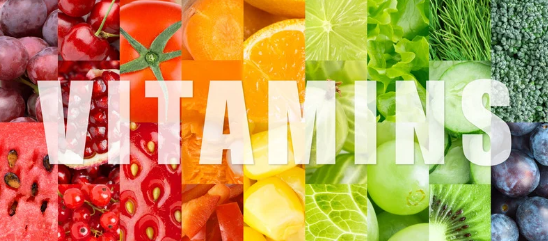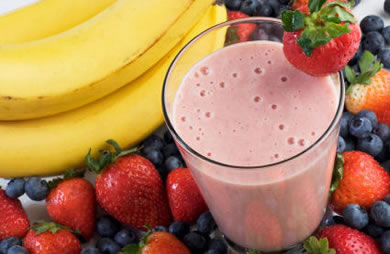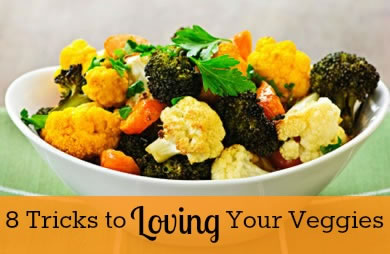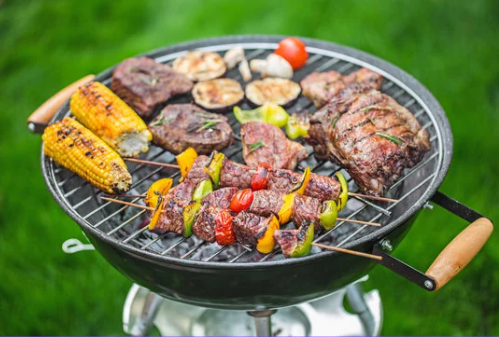As if it’s not already, eating out is about to become a bigger and bigger dieting challenge. Sticking to your guns away from home is hard for many reasons. They all seem to boil down to this dilemma: How can you possibly have control of your diet when you don’t control your eating environment?
But here’s the surprise—you CAN control your environment, no matter where you eat! You are the customer and you are in charge. From the time you pick up the car keys to the time you pick up the check, only you can decide whether to take a simple step forward or allow yourself to be coaxed (and yes, sometimes even manipulated) into busting your calorie budget.
Here are some ideas and strategies that will help you take charge of your next culinary adventure, every step of the way:
Choosing a Restaurant
Eating healthy while eating out is all about one word: preparation. If you go into a restaurant cold, without any thought, you’ll be more susceptible to the creamy, the fatty and the gooey before you can prepare your defenses. Give yourself a chance by giving yourself options.- Avoid "all-you-can-eat" places. More diets go here to die than any other type of restaurant.
- Choose a healthy restaurant near you with a varied menu. It’ll make it easier to find something healthy and to your taste.
- Don’t decide to eat out on the spur of the moment, if possible. It’s best to make plans and account for it during the rest of the day’s menu planning.
- Fish restaurants and restaurants with extensive salad bars usually have healthy options available.
- Try to avoid restaurants that promote "entertainment" eating, where the food is one of several attractions. This usually means the menu is choked full of fried, fatty and huge dishes.
- Any restaurant with a mascot is probably bad news.
Before Leaving the House
Sometimes, the battle is lost before we even open the door. Know what you’re getting yourself into so you’re not surprised later or forced to choose between two deep-fried evils. All it takes is a few minutes.- Go to the restaurant's website to find a menu and study it.
- Decide what you want to eat before you leave the house. Is this a chicken night or are you craving pasta? If possible, choose a specific menu item so you’re not tempted by the menu at the restaurant.
- Make reservations. This cuts down on waiting and hunger time at the restaurant, as well as the number of drinks you have at the bar.
- While making reservations, check on preparation methods and their ability and willingness to accommodate your requests. Learn what options you have and what substitution choices are available.
- Try to reserve a table away from the kitchen so piles of delectable dishes aren’t paraded by as you’re deciding what to eat.
- Know what you can afford to spend out of your calorie budget – but don’t starve yourself, it’ll only court temptation.
- Don’t leave the house hungry. About 1-2 hours before eating, have a small, healthy snack (apple, small salad) to avoid pre-meal munching later.
- Bring along some whole wheat or rye crackers and packets of your favorite low-calories salad dressings. Don’t count on the restaurant to always have the ones you like.
When You Sit Down
This is a critical point that sets the tone for the rest of the evening. It’s when much of our mindless munching happens, we can see and smell the food all around us, and we’re usually at our hungriest. If there were ever a perfect time to take charge of your experience, this is it. Get off on the right foot.- Start by politely sending back those free munchies that show up right away. Bread baskets, rolls, tortilla chips or Chinese noodles can be bottomless pits of calories. Not to mention all of the butter that usually comes with them.
- If you need to munch a little to ward off hunger, ask the server if something else is available. They might have rye or whole wheat bread or rolls, melba toast or whole wheat crackers instead.
- Ask if there is a lower-fat alternative spread instead of the butter. If not, plain rolls aren’t so bad.
- Choose salsa over con queso or other cheesy dips.
- Order water right away and start sipping. Much of what we mistake as hunger is often merely thirst.
- A glass of spicy tomato juice or vegetable drink can bridge the hunger gap.
- Dessert menus, with huge, tasty close-ups of caloric landmines are on the table for a reason. Even if it’s a tabletop display, give it to your server.
Ordering Up
Many people stumble here as they make split-second decisions and rationalize away poor choices. But since you have a plan ahead of time, it should make it easier to stay on course. If you’re faced with a menu and no time to prepare, there are still a number of rules of thumb and tricks you can use.- Try to order first. Listening to everyone else’s choices can be pretty tempting.
- Don’t ever be shy about asking questions or making requests. The food is every bit as important as the restaurant, the table and the setting, so make sure it’s what you want.
- Try ordering menu items a la carte. Platters, combos and meals may come with extras you might not want. For example, a group of side items can make a great meal and fruit can make a delicious appetizer.
- Ask about the size of the dish. This could be important information when watching calories.
- You can add vegetables to just about anything (salad, pasta, soup, cheeseburgers) if you just ask.
- Watch out for cheese, sour cream, gravies and special sauces.
- Ask for your food not to be prepared with butter, cream sauces or oil
- When in doubt, opt for brighter color. Most high-calorie, high-fat menu items are brown, beige, white or pale yellow (other than some desserts, of course).
- Don’t feel rushed into making a hasty decision. Just because your server is in a hurry doesn’t mean you have to be. At the same time, if you’ve made a healthy decision, stop looking at the menu immediately.
- Try ordering one course at a time. Order a healthy appetizer, but don’t order your soup or salad until you’re finished, then eventually your entrée. Sure, you may be starving now, but how will you feel in 20 minutes after the appetizer? Still feel like facing that pile of country fried chicken? Take your time, relax and enjoy.
Appetizers
When faced with a menu, the first reaction of many dieters is to skip right to the entrees without considering an appetizer. While they may believe they’re eating less this way, jumping right into the heavy stuff when hungry may actually load on more calories. To stave off hunger or the desire to binge, try to start with something other than the entrée.- The good news is that this "something" can come from anywhere on the menu, not just the appetizer section. Look at other parts of the menu (salads, soups, side items, even breakfast items) for healthy starter options.
- Some great starter options: fruit, melon, steamed seafood, smoked salmon.
- The kitchen may be able to put together a small vegetable tray for you upon request.
- Broth-based soups or consommé can be a tasty first course.
- Avoid anything fried or breaded, and be wary of any item that comes with a dip.
- If you do end up with something breaded, peel off the coating; much of the fat usually resides here.
- Avocado is high in fat, so take it easy on the guacamole.
- Use ketchup, mustard, bbq sauce, salsa or taco sauce instead of mayonnaise, tartar sauce or any creamy sauces or dips.
Soups & Salads
Often high in fiber, the right soups and salads can curb hunger and add a bunch of vegetables and nutrients to your meal. Much better to be filling up on leafy greens at the beginning of your meal after all, than munching on those last few dozen french fries on your plate.- Salad bars can be good or evil, depending on how you use them. Pass over the grated cheeses, eggs, creamy dressings, bacon, croutons, pasta salad, potato salad and macaroni salad, and stick with the staples of sliced carrots, peppers, tomatoes, cucumbers, snap peas, raisins, nuts, garbanzo beans, fruit and other fresh produce. That alone can be quite a meal.
- Ask for extra vegetables on your house salad.
- Spend a little extra and order the spinach salad or one with more vegetables. House salad greens often lack nutrients and taste and try to make up for it with more high-calorie toppings.
- Always get your salad dressings on the side. Instead of pouring it on top, dip your fork in the dressing before taking a bite.
- If you can’t find low-fat dressing options that you like, try a squeeze of lemon, or vinegar with a touch of oil.
- "Meal" salads often have more toppings than veggies. Avoids salads piled with breaded chicken, olives, cheese, bacon, eggs and croutons.
- Taco salads are notorious for seeming healthy, but actually being high in calories. Much better to start with a house salad and ask the kitchen to add on ingredients and taco flavorings.
- Avoid creamy soups like chowder or bisque, which can be loaded with fat and calories. Instead, try broth-based soups, like minestrone, wonton, beef barley, gazpacho, consumme, tortilla, or the classics like chicken noodle or vegetable.
- Bean or pea soups (like split pea, bean and ham, lentil, black bean or navy bean) have more calories, but are so packed with fiber and nutrients, and are so filling, that it may be worth it.
Entrees
Ah, the centerpiece of your meal – and usually the biggest collection of calories. Still, there is no need to sacrifice fulfillment and taste for the sake of eating lighter. You are usually safe with this course if you simply make good choices in two areas: preparation methods and sauces.- Bad preparation words = buttery, breaded, buttered, fried, pan-fried, creamed, scalloped, au gratin, a la mode.
- Good preparation words = grilled, baked, steamed, broiled, poached, stir-fried, roasted, blackened.
- Avoid sauces made with milk, cheese, oil or mayonnaise.
- Marinara and tomato-based sauces are usually more flavorful and healthier than creamy sauces and gravies. As a rule of thumb, red is usually better than white or yellow.
- Get all sauces, gravies and creams on the side so you can add to taste.
- Even better, rely more on herbs and spices to flavor your food. Become familiar with your favorites and ask for them by name.
- If ordering pasta with a cream sauce, ask the kitchen to go light on the sauce.
- Know your fatty and lean meats. Pork: fairly lean except sausage, bacon, and ribs. Fish: all fairly lean or contain healthy fat. Chicken: fairly lean especially when skin and fat is removed, and white is leaner that dark meat. Ground b eef products (in order of most to least fat): ground beef, ground chuck, ground round. Eye of round and roasts are leaner, while steaks and ribs have more fat.
- Don’t eat the skin of chicken, turkey or duck. You can save yourself loads of fat and calories with this simple step.
- Ask for your fish or meat to be broiled, with no extra butter.
- If you order prime rib or roast, ask for a center or inner cut, as there will likely be less fat.
- A recommended serving size of meat is 3-4 ounces. If you order a 9 ounce steak, make sure there is some left.
- Vegetarian options are not always lower in calories if they’re loaded with cheese, nuts and other non-vegetable ingredients.
- Remember, a salad and a healthy appetizer can make a great meal!
Side Dishes
This course is so often an afterthought, but can really make or break your dining out diet. It’s a great opportunity to load up on nutrients and build confidence with some smart choices.- Order as many vegetable options as possible. Steamed, stewed or boiled veggies are best, with little or no added butter or oil. Avoid butter and cheese sauces. Watch out for anything "creamed" or in casserole form.
- Potato options are good too. Stick with baked, boiled or roasted potatoes instead of fried potatoes, such as chips, fries or hash browns.
- The loaded baked potato can be a loaded problem. Instead of butter, sour cream, cheese, and bacon bits, try salsa, chives, pepper, margarine, low-fat sour cream, broccoli or salad bar veggies.
- Coleslaw is often mistaken for a healthy option, when in actuality it can be really high in calories.
- Fruit or fruit salad can make a sweet side dish (and might subside any craving for dessert). If there is no fruit cup side listed on the menu, the kitchen may still have the ingredients.
- Plain rice or noodles is better than anything fried or steeped in creamy sauce or gravy. A tomato-based sauce can be added as well.
- Bottom line: try to never dine out without at least one vegetable on your plate.
When the Meal Arrives
How you eat is often as important as what you eat. Dining out is not a race, or a contest, or a chance to solidify your membership in the Clean Plate Club. It’s a chance to enjoy yourself and a good meal. Guilt can ruin everything. You can choose to not feel guilty (not likely for many of us), or you can give yourself less to feel guilty about. A few small eating strategies will make your experience away from home a positive one and help you build momentum for next time.- Eat your lowest calorie items first. Vegetables are always a good place to start.
- Eat the amount you would eat at home. Just because it’s on your plate, it doesn’t mean you have to eat more.
- Eat slowly, take your time. Enjoy and savor one bite at a time. Put your fork down between bites, or take a sip of water.
- Concentrate on the conversation, not your food. If you’re talking, it takes longer to eat and helps you feel full before stuffing yourself.
- When half of your food is gone, stop a moment and ask yourself this question: "Am I hungry?" It sounds simple, but you’d be surprised how often the answer is "no." If so, why keep eating? Think of it this way, would you enjoy stuffing yourself now more than having the same delicious meal again tomorrow when you’re actually hungry again?
- Don’t pick at your food after you’ve decided that you’re done. Cover your plate with a napkin, pour salt and pepper on it, or put your utensils on the plate, making them messy.
- Keep your hands busy with something besides your utensils. Read a newspaper or write a note – or simply hold hands with your date!
- Chew some gum or have a mint after you’re done.
- Give the restaurant manager feedback on their ability to meet your dieting needs. They’re in the business of pleasing all of their customers, not just the ones who crave fatty, breaded, gooey foods.
- Keep a personal notebook of healthy dishes and restaurants. If you found a good option, keep it on file. Refer to the notebook when deciding on your next dining out experience.
Desserts
You’ve done so well so far, don’t mess it up now! A healthy meal is something to build on, not an excuse to splurge on a triple fudge brownie volcano. You can have a delicious send-off without completely depriving your sweet tooth.- You can never go wrong with fruit as a dessert, as long as it’s not buried under syrup or whipped cream.
- Sorbet or frozen yogurt are great alternatives to ice cream, but watch the sugar content.
- Total dessert deprivation doesn’t work in the long run. The key is to find smart ways to enjoy a little bit. One cookie isn’t going to derail your entire program.
- Angel food cake with fresh strawberries is a very refreshing healthy dessert, but it’s rarely found on menus. Again, watch the sugar.
- Lemon meringue pie, or other meringue pies, are generally decent choices.
- If you absolutely have to have something and you can’t find another alternative, plain ice cream isn’t horrible. Just keep it to one scoop..












